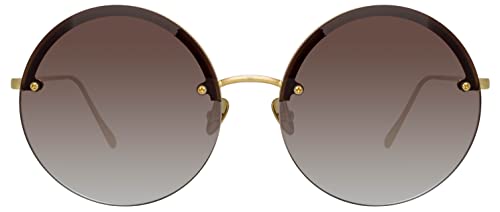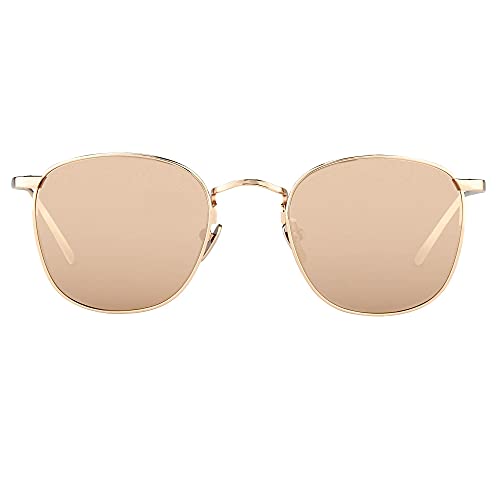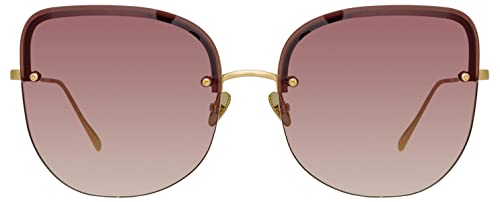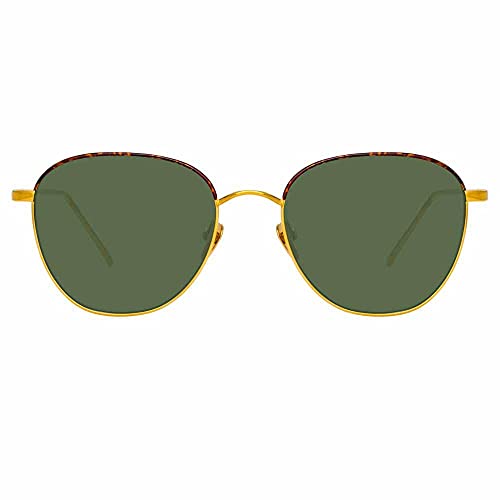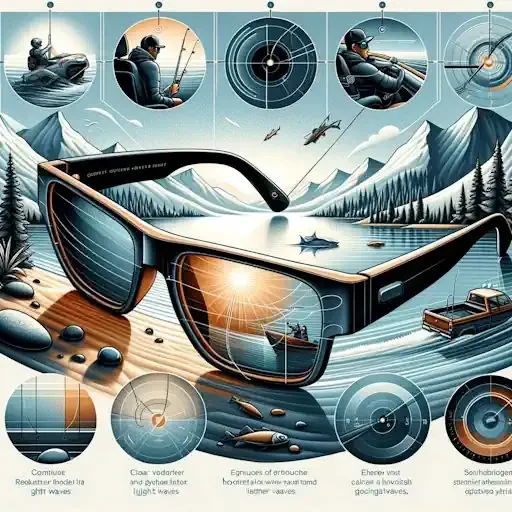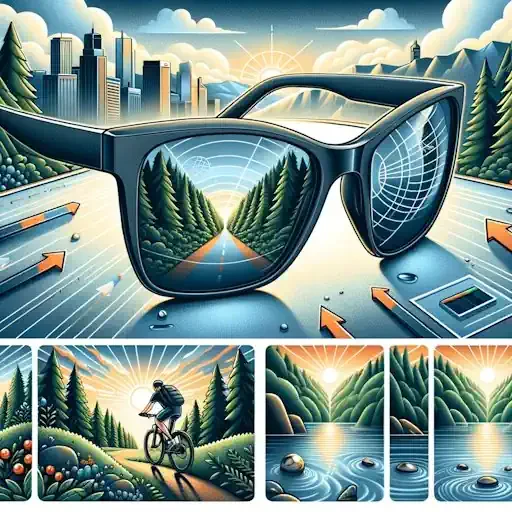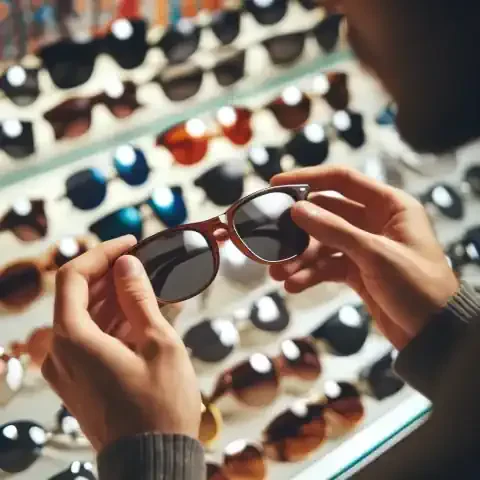Introduction
Sunglasses have long been a ubiquitous accessory in the world of music, transcending mere utility to become emblematic of style, attitude, and identity. From the smoky stages of jazz clubs to the dazzling lights of stadium concerts, sunglasses have adorned the faces of countless musicians, leaving an indelible mark on both their personal aesthetics and public personas.
In the vast tapestry of the music industry, sunglasses serve as more than just a shield against the glare of the spotlight—they are a statement, a symbol, and a silent narrator of the narratives woven by artists. Whether perched atop the nose of a rockstar, perused by a hip-hop mogul, or tucked into the collar of a country crooner, sunglasses have become an intrinsic part of the visual lexicon of music culture.
Exploring the Relationship between Musicians and Sunglasses, from Fashion to Functionality
In this article, we delve into the multifaceted relationship between musicians and sunglasses, navigating the intricate pathways that intertwine fashion, functionality, and cultural significance. From the early days of jazz pioneers donning sleek shades to the contemporary icons shaping global trends, we dissect the evolution of sunglasses as both a fashion accessory and a practical tool for performers.
Through an exploration of historical contexts, iconic moments, and case studies of renowned musicians, we aim to unravel the complex narratives behind the sunglasses-clad personas that have become synonymous with musical legends. Moreover, we examine the ethical and cultural implications inherent in the appropriation and symbolism of sunglasses within diverse musical communities.
By shedding light on this oft-overlooked facet of music culture, we endeavor to uncover the deeper layers of meaning embedded within the seemingly simple act of donning a pair of sunglasses, ultimately illuminating the profound impact they wield in shaping the visual landscape of the music industry.
Sunglasses are widely popular with musicians today. At concerts, in public appearances and across magazine pages, many musicians seem inseparable from their signature shades. Bono, the front man Paul David Hewson of U2, has incorporated sunglasses into his personal style for the last 20 years. Large designer sunglasses have been popularized by recent musicians like Rhianna and Lady Gaga. Sunglasses have found a permanent home on the faces of musicians, but who started the trend and why?
Historical Background
Sunglasses have a storied history intertwined with the evolution of music culture, dating back to early instances where they were worn by musicians as both a practical necessity and a fashion statement. This section explores the trajectory of sunglasses in the music industry, from their humble beginnings to their iconic status today.
The birth of popular music is something that predates the paparazzi, which is why it is difficult to credit any musician with being the first to don rock-star shades. Sunglasses have become synonymous with the image of famous and not-famous musicians alike. Some musicians have suggested that they wear their sunglasses to help avoid irritation from bright stage lights or constant camera flashes. Others have speculated that sunglasses afford a certain level of protection and privacy for musicians. While most musicians and managers seem quick to point out a functional necessity of a star’s motivation to wear sunglasses in locations without sun, the clearest explanation was once given by the musician who built a reputation around his Ray Ban Wayfarer sunglasses: he thought they looked cool.
Early Instances of Musicians Wearing Sunglasses
The origins of musicians wearing sunglasses can be traced back to the jazz age of the early 20th century. Jazz musicians, often performing in dimly lit clubs and outdoor venues, began wearing tinted eyewear to reduce glare and protect their eyes from harsh lighting conditions. This practical use soon evolved into a stylistic choice, with performers like Ray Charles and Duke Ellington incorporating sunglasses into their on-stage personas.
The earliest musician to develop a signature stage style that incorporated a pair of sunglasses was the 1960s rock and roll singer Roy Orbison. Today, the memory of Orbison’s image is inseparable from the black framed dark glasses he constantly wore, but his decision to first walk out on stage in them was one of sheer coincidence and circumstance. Orbison explained in past interviews that his decision to wear sunglasses came to him during his early days as a musician. Apparently, while setting up for a gig, he realized that he had not brought his regular clear glasses with him. Orbison’s eyesight was so poor that he could not comfortably perform without his glasses. He had worn his prescription Ray Ban Wayfarer sunglasses to the gig, which is why he had not noticed he was missing his other glasses in the first place. Ultimately, he decided it was better for him to wear his dark prescription sunglasses than to risk going on stage blind as a bat. In the days that followed, he saw photographs from his performance and decided that the sunglasses gave him a look of cool that he intended to keep.
Orbison’s decision to embrace the cool rock and roll look he had accidentally invented would later influence others like Bob Dylan, Johnny Cash and the Beatles. Throughout the 50s, 60s and 70s, the momentum of association between the Ray Ban Wayfarer sunglasses and musicians steadily grew. In 1980, the culmination came when the musician cool of early rock-and-rollers was immortalized in the classic film “The Blues Brothers.” The movie’s memorable phrase, “It’s 106 miles to Chicago, we got a full tank of gas, half a pack of cigarettes, it’s dark, and we’re wearing sunglasses,” immortalized musicians’ need for coolness regardless of any sunlight.
Evolution of Sunglasses as a Fashion Accessory
As the 20th century progressed, sunglasses underwent a transformation from utilitarian eyewear to must-have fashion accessories. The 1950s and 1960s saw the rise of iconic sunglass styles such as the Wayfarer and Aviator, popularized by celebrities and musicians alike. From the rebellious cool of rock 'n' roll to the mod aesthetics of British Invasion bands, sunglasses became synonymous with youth culture and musical expression.
Iconic Moments in Music History Involving Sunglasses
Throughout music history, sunglasses have played a pivotal role in shaping iconic moments and images. One such moment occurred during the 1969 Woodstock Festival when John Sebastian of The Lovin' Spoonful took to the stage wearing round, wire-frame sunglasses, epitomizing the countercultural spirit of the era. Similarly, in the 1980s, Madonna's provocative performances and oversized sunglasses became emblematic of the era's bold fashion and attitude.
From Elton John's flamboyant bedazzled frames to Kurt Cobain's grunge-inspired shades, sunglasses have been worn by musicians as a means of self-expression, rebellion, and identity. These moments in music history not only showcase the enduring appeal of sunglasses as a fashion statement but also underscore their role as powerful symbols within the cultural zeitgeist.
In the next sections, we will delve deeper into the influence of musicians on sunglasses trends and the symbolism behind these iconic eyewear choices.
Fashion Statement
Sunglasses have transcended their original purpose of eye protection to become a defining element of fashion, with musicians at the forefront of shaping trends and setting styles. This section examines the influential role of musicians in dictating sunglasses fashion, the diverse array of styles favored by artists across different genres and eras, and the collaborative efforts between musicians and eyewear brands.
Influence of Musicians on Sunglasses Trends
Musicians have long been trendsetters in the world of fashion, and their choice of eyewear is no exception. From Elvis Presley's iconic aviators to Kanye West's futuristic designs, musicians have propelled sunglasses styles into the mainstream consciousness, often sparking global trends in the process. The effortless cool of artists like Bob Dylan and the edgy sophistication of Beyoncé have cemented sunglasses as a staple accessory for performers seeking to cultivate a distinct image and aesthetic.
Different Styles of Sunglasses Favored by Musicians Over the Years
The diversity of musical genres and subcultures has given rise to a myriad of sunglasses styles favored by musicians over the years. Rock and punk artists gravitate towards bold, oversized frames, while hip-hop stars opt for flashy embellishments and designer labels. Country musicians often embrace classic, aviator-style sunglasses, reflecting a rugged, Americana aesthetic, while pop icons experiment with avant-garde shapes and colors to make a statement on stage and screen.
Collaborations Between Musicians and Eyewear Brands
In an era of celebrity endorsements and brand partnerships, collaborations between musicians and eyewear brands have become increasingly common. From limited-edition collections to signature lines, these collaborations blend the creative vision of artists with the expertise of eyewear designers, resulting in unique and sought-after pieces that resonate with fans and fashion enthusiasts alike. Collaborations such as Pharrell Williams with Chanel and Rihanna with Dior have elevated sunglasses to coveted status symbols, blurring the lines between music, fashion, and luxury.
Through their sartorial choices and strategic collaborations, musicians continue to shape and redefine sunglasses trends, leaving an indelible mark on the ever-evolving landscape of fashion and style. In the following sections, we will delve deeper into the symbolic significance of sunglasses as a means of expressing identity and persona within the music industry.
Symbolism and Identity
Sunglasses serve as more than just a practical accessory for musicians; they are powerful symbols that convey identity, persona, and attitude. This section explores the symbolic significance of sunglasses in the music industry, examining how they are used to create personas, express individuality and rebellion, and shape the image and branding of musicians.
Use of Sunglasses as a Means of Creating Personas and Stage Presence
For many musicians, the stage serves as a platform for self-expression and theatricality, and sunglasses play a crucial role in crafting the personas they present to the world. Whether it's the enigmatic mystique of Daft Punk's sleek helmets and visors or the larger-than-life persona of Elton John bedecked in flamboyant frames, sunglasses help artists establish an aura of mystique and allure, captivating audiences and enhancing their stage presence.
Expression of Individuality and Rebellion Through Sunglasses
In a culture that celebrates individuality and nonconformity, sunglasses offer musicians a canvas upon which to express their unique style and attitude. From the anti-establishment ethos of punk rockers sporting torn leather and dark shades to the avant-garde fashion statements of Lady Gaga adorned in futuristic eyewear, sunglasses have become a symbol of rebellion and defiance, challenging societal norms and expectations.
Impact of Sunglasses on the Image and Branding of Musicians
In an industry driven by image and branding, sunglasses play a pivotal role in shaping the public perception of musicians. The choice of eyewear can convey a myriad of messages, from the effortless cool of James Dean's Wayfarers to the fierce confidence of Beyoncé's cat-eye frames. By aligning themselves with specific styles and brands, musicians can reinforce their image and cultivate a distinct visual identity that resonates with fans and garners attention in an increasingly saturated market.
Moreover, sunglasses have become integral to the branding strategies of musicians, often serving as recognizable symbols associated with their persona and music. Whether it's the iconic red frames of Bono or the sleek black shades of Johnny Cash, sunglasses have become synonymous with certain artists, transcending their function as mere accessories to become emblematic of their musical legacy.
In the following sections, we will delve into the practical considerations of sunglasses for musicians, exploring their functionality both on and off the stage and their role in managing privacy and public image.
Practical Considerations
Sunglasses serve not only as fashion statements and symbols of identity but also as practical tools for musicians, offering protection from harsh lighting conditions and serving as a barrier between their public and private lives. This section delves into the functionality of sunglasses for musicians, both on and off stage, and explores their role in maintaining privacy and managing public image.
Functionality of Sunglasses for Musicians, Both On and Off Stage
For musicians, sunglasses offer more than just a stylish accessory—they provide essential protection for their eyes during performances, whether under glaring stage lights or during outdoor concerts under the sun. By reducing glare and shielding their eyes from bright spotlights, sunglasses enable performers to focus on their craft without discomfort or distraction, enhancing their concentration and stage presence.
Off stage, sunglasses offer musicians a sense of anonymity and reprieve from the constant scrutiny of the public eye. Whether running errands incognito or traveling incognito through airports, sunglasses provide a shield against unwanted attention, allowing artists to navigate the world outside of their performances with a semblance of privacy and normalcy.
Protection from Stage Lights and Paparazzi Flashes
The intense lighting setups used in concerts and performances can pose a risk to musicians' eyesight, leading many performers to rely on sunglasses as a form of protection. By filtering out harmful UV rays and reducing glare, sunglasses safeguard against potential eye strain and damage caused by prolonged exposure to bright lights, ensuring the long-term health and well-being of artists.
Furthermore, sunglasses offer a defense against the invasive flashes of paparazzi cameras, shielding musicians' eyes and preserving their anonymity in moments of vulnerability. By concealing their expressions behind tinted lenses, artists can maintain control over their public image and protect their privacy in the face of relentless media scrutiny.
Role of Sunglasses in Maintaining Privacy and Managing Public Image
In an era of social media and 24/7 news cycles, maintaining a carefully curated public image is paramount for musicians. Sunglasses offer a means of controlling the narrative and projecting a desired persona to the world. Whether exuding an air of mystery with oversized frames or exuding confidence with mirrored aviators, sunglasses allow artists to craft a visual identity that aligns with their brand and resonates with their audience.
Moreover, sunglasses provide a layer of separation between the public and private spheres of musicians' lives, allowing them to maintain a semblance of normalcy amidst the chaos of fame. By donning shades in public settings, artists can reclaim a sense of autonomy and control over their personal space, striking a balance between accessibility and boundaries in their interactions with fans and the media.
In the following sections, we will explore specific case studies of musicians known for their iconic sunglasses and examine the cultural impact of these eyewear choices within the music industry.
Case Studies
In this section, we delve into specific case studies of musicians renowned for their iconic sunglasses, analyzing how these eyewear choices contribute to their overall image and brand while discussing the cultural impact they have within the music industry.
Elton John
Elton John is synonymous with flamboyant style and extravagant eyewear, often seen sporting oversized, bedazzled sunglasses that have become a signature part of his persona. These bold frames not only shield his eyes from the glare of stage lights but also serve as a visual extension of his larger-than-life personality. By embracing eccentric designs and vibrant colors, Elton John's sunglasses convey a sense of theatricality and extravagance that aligns with his theatrical stage presence and enduring legacy as a pop icon. His eyewear choices have had a profound cultural impact, influencing fashion trends and inspiring countless imitations among fans and fellow musicians alike.
Kurt Cobain
Kurt Cobain, the frontman of Nirvana, epitomized the grunge aesthetic of the 1990s with his disheveled attire and iconic oval-shaped sunglasses. His understated frames, often worn with an air of nonchalance, became emblematic of the anti-establishment ethos of the grunge movement, reflecting Cobain's disdain for mainstream conventions. While providing a shield against the glare of media scrutiny, Cobain's sunglasses also reinforced his image as a reluctant iconoclast, challenging the status quo with every strum of his guitar. His eyewear choices continue to resonate within the music industry, symbolizing the raw authenticity and rebellious spirit of the grunge era.
Rihanna
Rihanna, the Barbadian singer, fashion icon, and entrepreneur, has made waves in the world of eyewear with her daring and innovative designs. From futuristic visors to oversized shield sunglasses, Rihanna's eyewear choices reflect her fearless approach to fashion and her ability to push boundaries and defy expectations. By collaborating with luxury brands and infusing her personal style into her eyewear collections, Rihanna has cemented her status as a trendsetter and influencer within the music and fashion industries. Her eyewear choices not only contribute to her overall image as a style icon but also challenge traditional notions of beauty and self-expression, empowering fans to embrace their individuality and confidence.
Discussion of the Cultural Impact of These Musicians' Eyewear Choices
The eyewear choices of musicians like Elton John, Kurt Cobain, and Rihanna transcend mere fashion statements, serving as symbols of self-expression, identity, and cultural influence. By embracing bold designs, pushing boundaries, and challenging norms, these artists have reshaped the landscape of eyewear within the music industry, leaving an indelible mark on both fashion and popular culture. Their iconic sunglasses have become emblematic of their respective eras and movements, inspiring generations of fans and fellow musicians to embrace creativity, authenticity, and individuality in their own style choices.
In the final section, we will conclude by reflecting on the significance of sunglasses in the music industry and highlighting the broader implications of their cultural and symbolic importance.
Ethical and Cultural Implications
As sunglasses continue to hold a prominent place within the music industry, it is essential to critically examine their ethical and cultural implications. This section delves into issues of cultural appropriation and misappropriation of sunglasses styles, the perpetuation of stereotypes, and the cultural significance of sunglasses across different musical genres and communities.
Critique of Cultural Appropriation and Misappropriation of Sunglasses Styles
The adoption of sunglasses styles from marginalized communities without proper acknowledgment or understanding of their cultural significance can perpetuate harmful stereotypes and erode cultural identities. When mainstream artists appropriate sunglasses designs originating from specific cultural or ethnic groups without meaningful engagement or respect for their origins, it can reinforce power imbalances and perpetuate cultural appropriation. It is crucial for artists and brands to approach the incorporation of diverse eyewear styles with sensitivity, awareness, and a commitment to honoring the cultural heritage from which they draw inspiration.
Exploration of the Role of Sunglasses in Perpetuating Stereotypes
Sunglasses have the potential to reinforce stereotypes and perpetuate harmful narratives when used as symbols of exoticism or caricatures of cultural identities. When certain styles of sunglasses become synonymous with specific racial or ethnic groups, they can be weaponized to reduce individuals to narrow stereotypes and reinforce existing power dynamics. By critically examining the ways in which sunglasses are represented and commodified within the music industry, we can challenge harmful stereotypes and promote a more inclusive and equitable understanding of diverse cultural identities.
Discussion of the Cultural Significance of Sunglasses in Different Musical Genres and Communities
The cultural significance of sunglasses varies across different musical genres and communities, reflecting unique histories, identities, and aesthetics. From the sleek aviators favored by rock and pop icons to the colorful frames embraced by hip-hop artists, sunglasses styles often mirror the cultural influences and artistic expressions of the communities they represent. By exploring the diverse ways in which sunglasses are integrated into the visual language of music, we can gain insights into the rich tapestry of cultural traditions and artistic innovation that shape the music industry.
In conclusion, while sunglasses remain a ubiquitous accessory within the music industry, it is essential to approach their use with mindfulness and respect for their cultural and symbolic significance. By critically engaging with issues of cultural appropriation, stereotype perpetuation, and cultural diversity, we can foster a more inclusive and ethically responsible approach to the representation and commodification of sunglasses within music culture.
Sunglasses and Muscians
Sunglasses have long occupied a central place within the music industry, serving as both practical accessories and powerful symbols of style, identity, and persona. This article has explored the multifaceted relationship between musicians and sunglasses, tracing their evolution from functional eyewear to iconic fashion statements.
Recap of the Importance of Sunglasses in the Music Industry
Throughout history, sunglasses have played a vital role in the visual landscape of music culture, shaping the images and identities of iconic artists across genres and generations. From Elvis Presley's aviators to Lady Gaga's avant-garde designs, sunglasses have served as visual markers of individuality, rebellion, and self-expression, leaving an indelible imprint on the collective imagination of fans and enthusiasts worldwide.
Reflection on the Multifaceted Relationship Between Musicians and Sunglasses
The relationship between musicians and sunglasses is far from superficial; it encompasses a complex interplay of fashion, identity, functionality, and cultural significance. Sunglasses offer artists a means of crafting personas, managing public image, and asserting autonomy in an industry often defined by scrutiny and commodification. Yet, they also raise ethical considerations regarding cultural appropriation, stereotype perpetuation, and representation within the music industry.
Call to Further Examine the Intersection of Fashion, Identity, and Functionality in Music Culture Through the Lens of Eyewear
As we conclude our exploration of sunglasses in the music industry, it is imperative to recognize the broader implications of their cultural and symbolic significance. By critically examining the intersection of fashion, identity, and functionality through the lens of eyewear, we can foster a more nuanced understanding of the ways in which music culture reflects and shapes broader societal trends and values.
Moving forward, we must continue to interrogate the ethical dimensions of sunglasses use within the music industry, champion diverse representations, and celebrate the rich tapestry of cultural influences that contribute to the vibrant visual landscape of music culture. By embracing a more inclusive and ethically responsible approach to the representation and commodification of sunglasses, we can ensure that their legacy within the music industry remains one of creativity, authenticity, and empowerment for generations to come.

